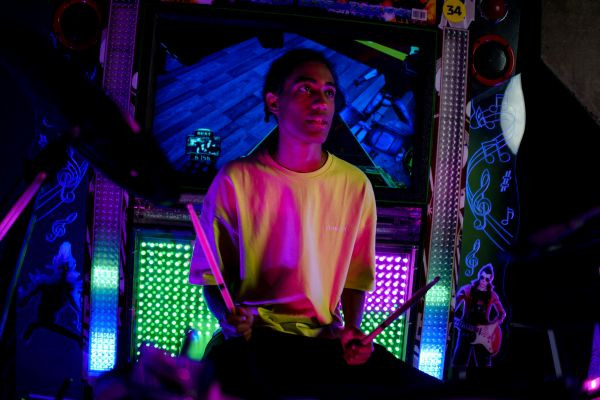The video game world has come a long way from initial arcade machines with pixelated graphics.
12/09/24 • 298 Views
The video game market, long accused of lack of diversity within game designers, now similarly, within characters' designs, as it was. For more than fifty years, a rather monoculture environment had reigned; namely, in the developers' side: young male white creating games, mostly for and about men. However, the gaming industry, whether the labor force that creates these games or the characters portrayed in these games, has made tremendous strides forward toward inclusion over the last ten years. These changes work not only to change the face of the gaming industry but also to enrich the experience of playing for those around the world.
The Changing Face of Game Development
The demographic makeup of the gaming industry workforce has changed. Traditionally, the development teams of the industry were predominantly male and mostly white. But, as the gaming world grows so does its diversity. Increasing numbers of women, color, and diverse cultural backgrounds are entering the gaming world to enrich game development with fresh perspectives and ideas.
Organizations, such as the International Game Developers Association (IGDA), have been working towards developing an environment where game developers will be more highly represented. According to IGDA, for instance, women now hold around 24% positions in the gaming industry labor force, which is very different from previous years. BIPOC developers are coming to the forefront as well. In fact, this is where most of the indie games, which are developed by a very diversified team, are catching the attention due to their storytelling, artistic direction, and cultural relevance.
This is not only good for the developers themselves but also for the gaming industry in general. This wider range of voices in the industry is creating games that reflect the diversity of our world. Hence, this diversification also aids video games to portray realistic crowds of the world's cultures since that has overcome too, the stereotype character and portrayal in the world. Also, this leads to innovation, as people of all sorts of backgrounds come into board with different ideas of raising what a game may be.
Diverse Characters: Portrayal in Gaming
The other big place this has evolved is through video game character diversity. For the longest time, the traditional video game hero was a white male and straight. The female often played a role or even was objectified. This new demand for inclusion created more complex and varied characters as does in life.
Perhaps, prime example of this change can be cited by referencing a game such as The Last of Us Part II. In that, there is Ellie, lesbian protagonist, and Abby-muscular, queer woman. Both are quite complex, and compelling enough, destroying stereotypes that had traditionally occurred within video games. It also did it in Spider-Man: Miles Morales with a Black and Puerto Rican superhero, a reflection of the actual New York City diversity, and perhaps for players who may never have seen themselves as the hero of a big-budget game.
Gender, sexuality, and cultural diversity are now of particular interest to the industry in ways that feel real. For instance, Assassin's Creed Odyssey, the player can choose Alexios or Kassandra, two siblings who have the same abilities; therefore, it is possible for a female protagonist if that is the wish of the player. Emphasis on giving more choices to diverse characters empowers the gamer to experience more-of-themselves stories or perceive and explore points of view.
The games that showed other ethnicity, gender, and backgrounds were appreciated in games such as Overwatch, Street Fighter V, and Tomb Raider. In Overwatch, for instance, heroes like Tracer, Zarya, and Symmetra represent various nationalities, sexual orientation, and body types. This game has given its users a broad spectrum of heroes that attracted a much more diversified fan base with an assurance that the customers will be seen and heard by the gaming community, who had been so exclusive in the first place.
The Impact of Diversity on Game Design
This growing diversity of developers and characters is also about the impact it makes on game design and storytelling. Diverse development teams are going to create nuanced stories which avoid harmful stereotypes and which reflect a variety of lived experiences. When developers from different backgrounds create games, they bring their cultural knowledge, life experiences, and perspectives into the content that ultimately results in more creative and engaging content.
For instance, the independent game Celeste is developed by a team of developers who include the lead developer Maddy Thorson. This game added personal experiences of mental health and identity to it. The game can, therefore, relate with a lot of ease to someone dealing with issues such as anxiety and self-acceptance. Similarly, Life is Strange, Dontnod Entertainment added issues concerning sexuality, mental health, and loss into the game.
Another reason that adds a rich diversity in the character depiction and sometimes also leads to harder gameplay and resists stereotypes, like in the most recent Resident Evil release, Village, featuring a female antagonist such as Lady Dimitrescu, tall, powerful, and far from being your ordinary female, so it was partly successful because it defied some preconceived notions on what a villain should be, such as the themes of deeper maternal love and sacrifice.
The Road Ahead
This industry still has miles to go towards full inclusivity even though it grows. For example, a female and LGBT and racial minorities must always be represented through game development, character design and in the voices as well as behind the screen and in games, in reflections of a wide spectrum of cultural contexts and experiences and perspectives.
In addition, the industry needs to address the toxic culture that, at times, has infested gaming communities and ensure that inclusive storytelling translates into positive and respectful interactions among players. Building inclusive spaces where all players feel comfortable is just as important as diversifying the content of games themselves.
Conclusion:
In conclusion, the growing diversity in the development of games and in characters' representation is a symptom of a brighter and more inclusive future for the gaming world. As more people from different backgrounds take part in creating games, and as characters reflect the diverse world we live in, the medium will continue to evolve, offering richer experiences for all players. This change isn't merely to satisfy some kind of need for representation but rather the evolution of creativeness, empathy, and connectivity across the gaming space. What would break down such barriers or embrace diversity, ultimately creating a more inclusive, more dynamic, and more engaging gaming future.



